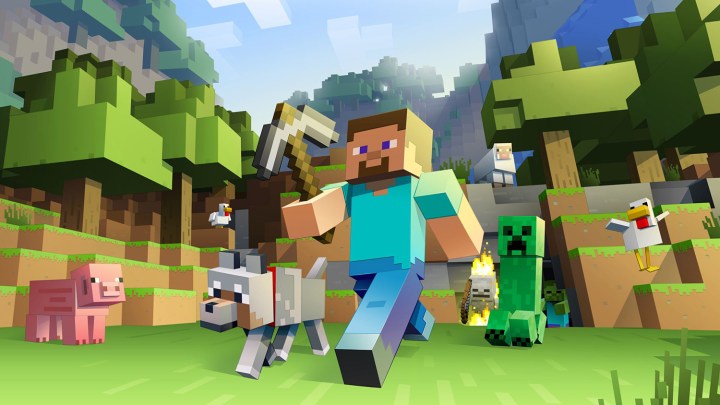It’s hard to find someone who was alive during the Wii’s heyday that hasn’t at least tried Wii Sports. It’s one of the bestselling games of all time, and its simple but accurate motion controls made everyone from young kids to seniors feel like they were an athlete for a few minutes. Those are big shoes to fill for any game trying to follow it up, and Nintendo Switch Sports is poised to reinvigorate the formula on April 29 with its reworked visuals and new sports offering.
But did you know that another Wii Sports game came out between those two titles? In the early days of the Wii U, Nintendo released Wii Sports Club, a remake of the classic casual sports title for the failed Wii U console. It enhanced the controls and visuals and tried to give the Wii Sports series a lively community.
Nintendo Switch Sports rekindled my memory of Wii Sports Club's existence, and following the announcement of the Wii U eShop's impending closure, I knew I wanted to check it out and see why this follow-up fell into obscurity. This meant paying $2 a day to access a remake of Wii Sports with broken features that almost no one was playing. Was it worth it? No, but it's a very fitting Wii U game as it's also a product completely overshadowed and made redundant by its predecessor.
Wii U - Wii Sports Club All Sports Trailer
Pay to play
I was able to find Wii Sports Club on the Wii U eShop and download it for free. While free-to-play Wii Sports seems like a fantastic idea, it doesn’t last long. The first time I booted up the game, I had a 24-hour free trial to try any of the five sports -- tennis, bowling, golf, baseball, and boxing -- that I wanted. I got a bit of tennis and bowling in on my first day with the game, but didn't see everything it had to offer.
After that first day, it was time to pay up. I was given two payment options in-game that would then bring me the Nintendo eShop. I could purchase the individual sports for $10 each, which would give me access to them and their associated minigames forever. My other option was to pay $2 a day to access everything.
Although having to buy a $2 day pass several days in a row for an abandoned Wii U game wasn't really a wise financial investment, I was curious enough to succumb to this microtransaction and keep playing. Doing that and only spending around $14 makes a lot more sense than paying $50 for remakes of games I got for free with my Wii over 15 years ago. This monetization scheme doesn't seem like it was that good of a deal in 2014, and it definitely isn't one now when there are tons of cheaper or free fitness apps that people can get much more out of. But what exactly did I get for that money?
Reinventing sports
Since June 2014, Wii Sports Club has featured the same five sports as the original Wii pack-in: Tennis, bowling, golf, baseball, and boxing. The individual sports play as you remember them in the original Wii Sports for the most part. Swinging the Wii Remote causes your character to make the same motion with a tennis racket, golf club, bat, ball, or fist. Some training mode minigames do shake the formula for each sport up a bit, but none kept my attention for long.
The most significant gameplay differences between the original Wii Sports and Wii Sports Club are Wii MotionPlus support and the Wii U GamePad. Wii MotionPlus is obviously more responsive than the basic Wii Remotes, so the movement of whatever you’re holding in-game does feel more accurate in Wii Sports Club. That said, the game is still easy and accessible enough that I’d call it a must-try for players who love Wii Sports.
Then there’s the Wii U GamePad, which comes up in golf and baseball. In golf, you place the Wii U GamePad on the ground, and it displays the ball you have to hit. It’s a fun visual touch but very gimmicky. Meanwhile, the GamePad’s gyroscope is used to aim pitches and catch balls in baseball. Although baseball makes much better use of the GamePad, constantly switching between it and the Wii remote can get tiring. Outside of those features, the Wii U GamePad is fairly useless in Wii Sports Club, so it isn’t nearly as good of a tech demo for its system as the original Wii Sports was.
Overall, these five sports are only slightly enhanced versions of what you remember from the original Wii Sports. It’s a remake that’s not wholly necessary, considering one can play the original game on Wii U via backward compatibility. That’s not a good thing when there are over six times more copies of Wii Sports out there than there are Wii U systems. It's a bite-sized version of the conundrum that the Wii U also found itself in.
Gone clubbing
Wii Sports Club is so named because Nintendo focuses on in-game clubs. Each day, players can choose to join a club -- many of which are based on states, regions, or countries. These clubs are then ranked individually for each sport, depending on their players’ performance.
I joined the Illinois club, but this didn't have a noticeable impact on my experience because Wii Sports Club's social functionality doesn't really work anymore. While it still tracks clubs' performances online, there's no good way to communicate.
Playing Wii Sports Club is a lonely experience in 2022.



